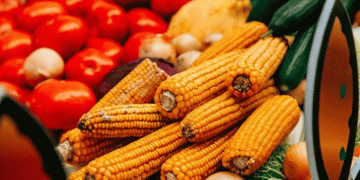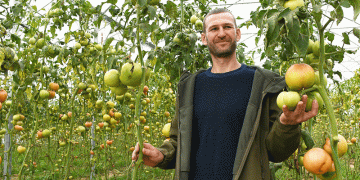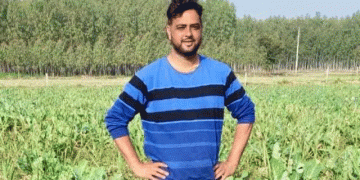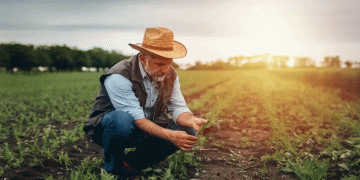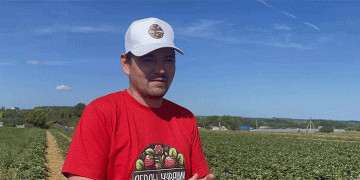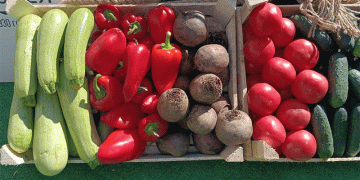When Scott Danner, chief operating officer for Kansas City, Kan.-based Liberty Fruit Co., told owner and CEO Arnold Caviar that he needed to expand the company’s fresh-cut facility by 3,000 square feet, Caviar responded, “Screw it. If we need 3,000 (square feet), let’s do 7,000.”
The addition to Carol’s Cuts, the fresh-cut division of Liberty, was completed in 2007, bringing the total operation to 12,000 square feet. The division, named for Arnold Caviar’s wife, was started in 2001 with a 500-square-foot area, and within three years had tripled in size. Other fresh-cut operations in Kansas City had closed up, and Carol’s Cuts was finding a growing market niche.
“There was no other processor in the area,” Danner said.
Liberty Fruit
Liberty has been doing business in the Kansas City area for more than 40 years. Founded by Arnold Caviar’s father, the third generation of Caviars is now leading the business, although Arnold – who has run the business since 1985 – is still quite involved in the business decisions, Danner said. The company is a shipper, packer and processor of fresh and fresh-cut fruits and vegetables.
As part of Produce Alliance, Liberty distributes to a five-state area in a 400-mile radius of Kansas City: Iowa, Kansas, Missouri, Nebraska and Oklahoma. About 45 percent of the produce is sold to foodservice customers, 30 percent sold wholesale and the remaining 25 percent is retail product. That diversity is part of what has helped Liberty see 20 percent growth each year for the last five years.
“If one segment is slow, the other picks up,” Danner said.
The Liberty facility covers more than 120,000 square feet, with state-of-the-art cooling and ripening facilities. Eleven temperature-controlled areas help maintain freshness for different products, and the company’s fleet of 50 trucks and trailers can ship 24 hours a day. The trucks are tracked by Global Positioning Satellite technology, which makes it possible for Liberty to know exactly where the produce is and do a better job scheduling deliveries and shipments.
In addition to the shipping business and Carol’s Cuts fresh-cut division, Liberty does fresh-pack tomatoes under the Mary’s Pride brand – named after Arnold Caviar’s mother. Mary’s Pride tomatoes are sold at retail as red salad and roma tomatoes. Some of the tomatoes go to re-pack and others to processors, because Liberty can do it cheaper than some processors can do it themselves.
“We save a lot of freight and can deliver fresh product,” Danner said.
Carol’s Cuts
When Carol’s Cuts started, it was in the back of Liberty’s facility, staffed by eight employees serving mostly food service customers. Within a year, the division had outgrown its space and a stand-alone, 5,000-square-foot plant was renovated on Liberty’s lot. In the four years following, the fresh-cut side of the business doubled, which led to the 7,000-square-foot addition.
“We didn’t walk, we ran,” Danner said.
The fresh-cut operation has gone from processing less than 40,000 pounds of produce a year to more than 160,000 pounds. With the additional space, the company has room to expand even further, and Danner said he could see Carol’s Cuts growing two to three times what it is now.
“Arnold will say ‘we’re maxed out, we’re maxed out,’ but you’re not maxed out until you’re running three shifts on every line,” Danner said.
Carol’s Cuts is running 10 lines for one afternoon shift that runs from 3 p.m. to 10 p.m. At 11 p.m., the company runs its onions through the equipment so that the plant is mostly empty and the sanitation crew can clean up after the onions before the next day’s shift begins.
More than 230 products go through the company’s fresh-cut processing lines, with much of the machinery newly added during the expansion. Virtually any type of processing can be done, depending on what a customer wants. The new equipment has saved a significant amount of time, with processes like potato peeling completed 20 times faster.
“I’m convinced you can never have too much machinery,” Danner said.
Liberty’s experience and facilities management help the fresh-cut plant produce better fruit and vegetable items. Raw product remains chilled from arrival through processing, and temperature is monitored in storage until it’s delivered to customers. A product’s package has a “processed on” date, so customers know their produce is fresh.
Adding a fresh-cut line has meant being even more careful with food safety. Carol’s Cuts has HACCP procedures in place and full-time quality assurance personnel to monitor and document the procedures – which Danner said is a necessity for a processor these days.
“It’s not that we weren’t doing the right things – it’s the documentation,” he said.
There are 20 books of documentation for various certifications and inspections that have to be current, and a trained quality assurance staff can prevent a costly mistake or missed points on an inspection.
“It just makes us a better company,” Danner said. “Price can’t be everything anymore.”
Growth and Support
The goal of the Liberty Fruit Co. – and its Mary’s Pride and Carol’s Cuts divisions – is to be a one-stop shop for customers. To help reach that goal, Liberty became a member of the Produce Alliance in 2001. Produce Alliance is a management company that specializes in finding and distributing produce for foodservice customers. The company doesn’t get into fresh-cuts, but the technology Produce Alliance uses has helped Liberty monitor and track its produce more efficiently.
“Our IT is way ahead of the competition,” Danner said.
But growing a company can involve a lot of cost, so Arnold and Allen Caviar want to be careful about how money is spent. Until the Carol’s Cuts expansion, Liberty had no debt, and even the loans they took out for the addition are short-term and only for the lowest necessary amount.
The Caviar family has always been independent, believing the company should only spend money that it has instead of borrowing money, Danner said. That mentality helps people make wise decisions, because everything has to be put on paper and each dollar spent comes right out of the coffers.
As the company looks to grow further, Danner doesn’t see that changing. Large-ticket items like machinery or buildings may require a loan, but they’ll continue to be used sparingly to keep Liberty as debt-free as possible.
Helping Out
For the past eight years, Liberty Fruit Co. has organized and sponsored a golf tournament to raise money for Children’s Mercy Hospital and Clinic in Kansas City. The fundraiser is an important fundraising effort for Arnold.
In the past few years, golfers have flown in from both coasts to participate and sponsors have lined up, including big names like Dole Fresh Vegetable, Gills Onions and River Ranch Fresh Foods. Last year’s tournament raised more than $100,000 for the hospital, shattering previous records and even the expectations of the organizers. The company has high hopes for the 2008 tournament, which will be held Sept. 22 at the Tiffany Springs Golf Club in Kansas City, Mo.














